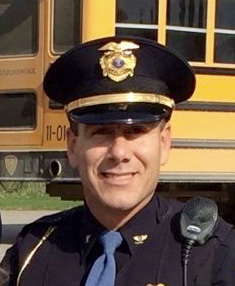
RESTORATIVE JUSTICE: What it is and can it work in Stockbridge?

Below, the Stockbridge Community News is pleased to introduce the first of a new monthly column from Chief of Police, Johnnie Torres, Jr.:
By Chief Johnnie Torres, Jr.
In criminal justice there are several approaches to achieve justice. For many, justice may mean that when a person commits a crime against another person, he or she should receive a punishment like going to jail. Fines and probation are also meted out by judges as a way to achieve justice for the harm done by an offender. One such approach is restorative justice, an unfamiliar phrase to many.
Simply put, restorative justice is a means in which the victim, offender, and other community members can meet and discuss the harm caused by the offender and come to an agreement as to how the offender is going to repair that harm and reintegrate into the community. According to prominent criminologist, John Braithwaite, restorative justice is about the idea that because crime hurts, justice should heal. Therefore, both the person who has been hurt and the person who inflicted that hurt must be part of the process.
Can this form of justice work in all circumstances? Well, probably not. But for some crimes it can work quite well. For instance, over a few nights this past summer here in Stockbridge, five kids, ages 10 to 12, decided it would be a good idea to go out after curfew and maliciously destroy some residents’ property like solar lamps and potted flowers.
It was not long before they were identified and confessed to their wrongdoings. Now, I must admit that other than reading a chapter or two in college about the subject of restorative justice, I didn’t know much about it. But after working in law enforcement for almost 25 years, I knew that the juvenile justice system might not be the best place to take these crimes and these kids in order to have justice served. So I decided to give it a whirl.
I called the victims who had been harmed and asked if they would be willing to meet with the young lads who perpetrated the crimes. The victims were all agreeable, so I called the kids’ parents and asked them if they would be willing to participate, which meant they had to bring their kids in and sit behind them as they faced the harmed parties. They were likewise agreeable.
The kids sat shoulder-to-shoulder at one table with parents behind them. The victims were seated to face them. Each victim had an opportunity to address the kids, and each kid had a chance to address the victims. The parents were also allowed to speak. During the meeting we all came to a consensus as to how the kids were going to repair the damage caused by their actions and regain good standing in the community.
Mostly, the victims just wanted the kids to say they were sorry and to do some community service. By all accounts this was a very positive experience for both sides.
I like to think of the proverb: It takes a village to raise a child. This was a perfect example of how a community may come together and forgive those who have harmed them, yet hold persons accountable and bring them back into the fold. I hope our youth will act accordingly when they are out unsupervised, and we don’t have to seek out justice after a crime is committed. But it is reassuring to know there are options and citizens willing to venture outside the traditional means of achieving justice.



